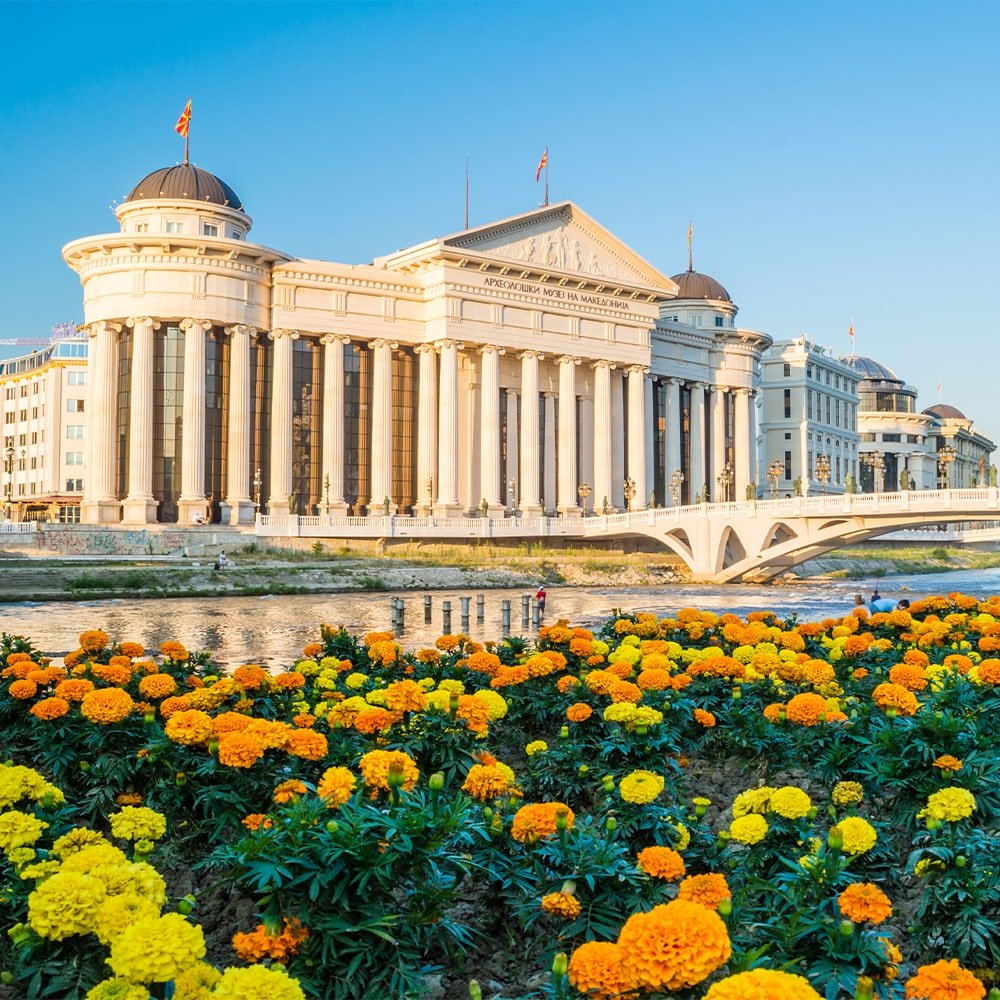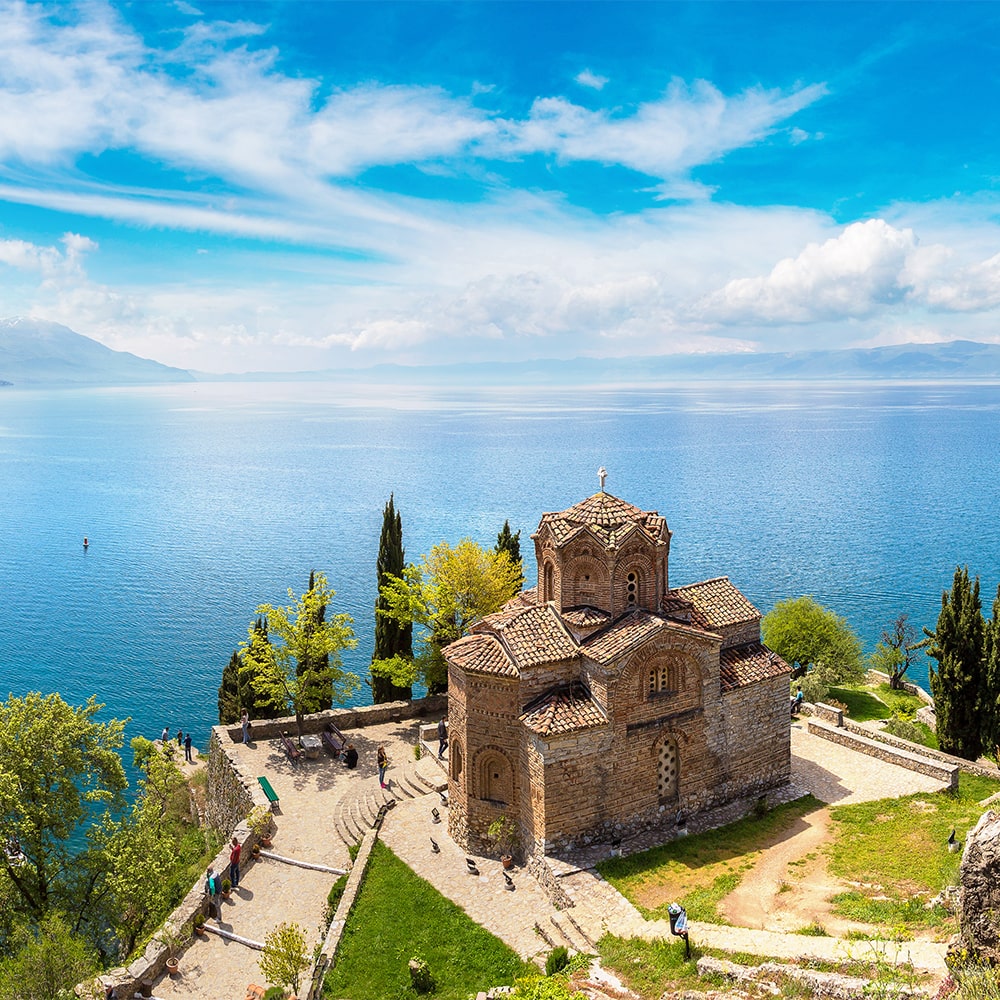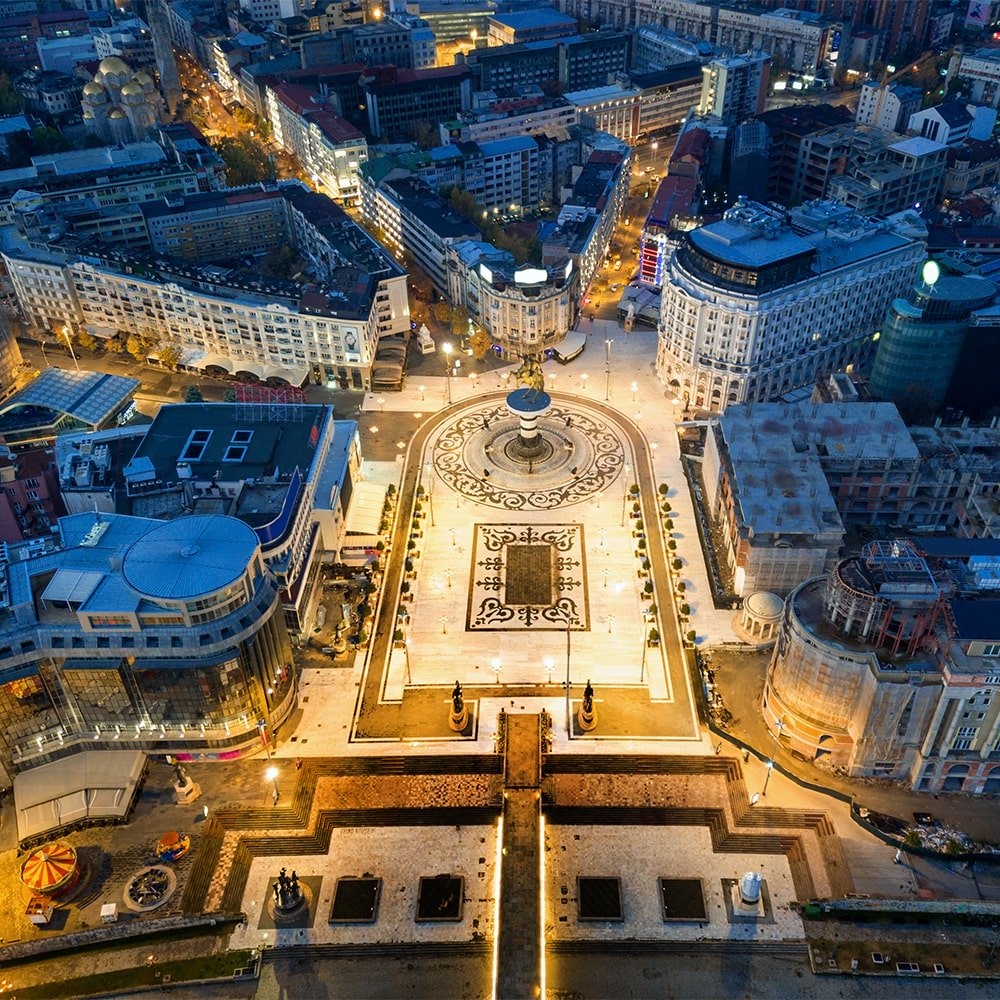Macedonia






Overview
Macedonia is a small nation with a complex and fascinating history. Part Balkan, part Mediterranean and rich in Greek, Roman and Ottoman history, it offers impressive ancient sites side by side with buzzing modernity, managing to pack in much more activity and natural beauty than would seem possible for a country its size. Easygoing Skopje remains one of Europe’s most unusual capitals, where constant urban renewal has made the city a bizarre jigsaw puzzle whose Turkish old town, ancient fortress, communist-era center and contemporary building spree combine to create a multifaceted city that never fails to surprise. Elsewhere in the country hiking, mountain biking, wine tasting and climbing beckon, while the remote mountains conceal fascinating medieval monasteries, superb alpine trails and traditional Balkan villages. Ohrid, noted for its beaches, summer festival, sublime Byzantine churches and 34km-long lake, is the centre of the country’s tourism industry, while in the winter months skiing at resorts such as Mavrovo become the main draw.
Highlights
Canyon Matka: a gorge in which a rich complex of mediaeval building survives, including churches, monasteries and remnants of a fortress (the mediaeval town of Matka).
Church of Sveti Jovan at Kaneo: this stunning 13th-century church is set on a cliff over the lake.
Fast Facts
Good to Know
Events
Ohrid Summer Festival: From mid-July to late August, the historic city of Ohrid celebrates its Summer Festival with theater, concerts and outdoor street performances. Many of the events are held in the city’s ancient buildings or around historic monuments. The festival is run by Macedonia’s President.
Skopje Summer Festival: Skopje’s annual cornucopia of concerts, folk music, traditional events etc.
7 DAYS / 6 NIGHTS TRAVEL THROUGH ALBANIA AND MACEDONIA
Arrival at Mother Theresa Airport and transfer to Tirana. In Tirana we will have an orientation tour with the French speaking guide where we will be introduced to the main landmarks. After the visits of Tirana check-in at hotel. Dinner and overnight at hotel. (D)
After breakfast depart toward Kruja, home of Albania’s most important hero, Scanderbeg, who in the 15th century successfully fought off the Turks for over thirty years. Sightseeing at his castle and the impressive Scanderbeg Museum. Shopping in old bazaar.
After the visit and lunch in Kruja drive toward Durrës. On the way to Durrës we will stop by at Polis University where we will have a lecture in French by one of the most prominent Albanian art critics who will introduce us to the story of Albanian socialist realism and the developments after the fall of dictatorship.
After the lecture at Polis University proceed toward Durrës. This busy port city has one of the largest Roman amphitheaters in the Balkans. Durres is one of the oldest Roman cities in the Mediterranean and the largest seaport in Albania.
After the visit of Durrës check-in at hotel. Dinner and overnight stay at hotel. (B, L, D)
After breakfast we drive to Vlora. On the way to Vlora we have a short stop at Ardenica Monastery dating from the 13th century.
After the visit of Ardenica, departure for Fieri to visit the archaeological site of Apolonia. Apollonia together with Butrinti are the most important archaeological sites in Albania dating from the 5th century BC. Continue toward Vlora. Vlora has a long history, but its main claim to fame is as the place where Albanian independence was proclaimed in 1912. Walking tour in Vlora where we will get introduced to the Flag Square, Independence House and Muradie Mosque. Dinner and overnight at hotel in Vlora. (B, L, D)
Proceed to Saranda through Llogara Pass (3500 feet above sea level). Drive all the way to Saranda along the mountain road known as Albanian Riviera, enjoying the beautiful and dramatic scenery and landscapes of the Ionian Coastline. En-route brief visit the Ali Pasha Fortress at Porto Palermo Bay. Arrival in Butrint and have lunch by the archaeological site. Afternoon visit of the Greek and Roman ruins of Butrint, Albania’s most important archaeological site. After a leisurely exploration, we will lunch in Ksamil overlooking the Ionian.
Return back in Saranda. Dinner and overnight stay in the city. (B, L, D)
Morning departure for the museum city of Gjirokastra to visit its fortress, the armaments museum and the ethnographic museum, former house of Albanian communist dictator E. Hoxha.
After the visit of Gjirokastra departure for Berat. Upon arrival in Berat check-in at hotel. Dinner and overnight stay at hotel. (B, L, D)
After breakfast start the visit of Berat. Its castles and fort date back 2400 years. Afternoon visits to Onufri Museum, the Ethnographic Museum, Bachelors Mosque and the King’s Mosque.
After lunch, departure for Ohrid. Upon arrival in Ohrid check-in at hotel. All afternoon free at leisure by the lake shore in Ohrid. Dinner and overnight stay at hotel. (B, L, D)
After breakfast our day begins with a panoramic cruise around the old town and across the lake. The resort town of Ohrid is one of the oldest settlements in Macedonia dating from before the Slavic period. Ohrid is an UNESCO site located in the Ohrid/Prespa region near Galicica National Park. It has a long rich history but is perhaps best known for the missionary brothers Cyril and Methodius who arrived in Ohrid in 886AD and made Ohrid a leading center of Slavic culture and literary activities. The brothers are credited with the creation of the Cyrillic Alphabet which helped them spread their missionary work in the Slavic world. After our journey on the lake we continue sightseeing on foot strolling through the picturesque alleys of the old town, discovering the craftsmanship of the rich tradition of silver filigree, wood carving, and Ohrid’s Pearls.
Visit the protected archaeological museum and the House of Robevc. Visit the first renaissance frescoes in the church of St. Sophia and continue to the Mother of God Church Perivlepta with the apocryphal scenes in rich frescoes from the life of the Virgin. Stop at the Classical Theatre, built 2000 years ago and still used today. At Plaoshnik tour the excavations of the Monastery of St. Pantelejmon, seat of the first Slavic University in Europe founded by St. Clement. Time for lunch of Ohrid trout prepared fresh from the lake. After lunch depart toward Tirana via Elbasan. Transfer to Mother Theresa International Airport. (B, L)
PHOENIX TOURS: ALBANIA, MACEDONIA, BULGARIA, ROMANIA & SERBIA 10 NIGHTS / 11 DAYS FROM TIRANA TO BELGRADE
Arrival at Mother Theresa International Airport in Tirana and transfer toward Kruja, home of Albania’s National hero, Scanderbeg, who in the 15th century successfully defended his homeland against the Turks. Sightseeing will include the Old Castle, the Scanderbeg Museum, the Ethnographic Museum, and shopping at the Turkish-style bazaar.
Lunch in Kruja at traditional restaurant inside the castle. After Kruja drive toward Tirana. Your guide will show you the many sights of Skanderbeg Square whose architecture influences range from Ottoman Turkish to Fascist Italian to Chinese Communist. Tour the Mosque of Et’hem Bey; the Clock Tower; the statue of G.K. Skanderbeg (Albania’s national hero), the Palace of Culture, The National Gallery and the National History Museum with its distinctive mosaic. Check-in at hotel in Tirana. Dinner and overnight at hotel in Tirana (B, L, D)
After breakfast drive to Ohrid via Elbasan. Arrival in Saint Naum and have lunch at local restaurant by the lake side. After lunch, visit the monastery of St. Naum close to the Albanian border. Take a rowboat ride through the natural mineral springs, and photograph the peacocks that roam around the grounds. Then, we’ll take the van along the winding lakeside road into the ancient city of Ohrid, supposedly home to 365 churches! (If the weather and other conditions allow, we will replace the van with a nice enjoyable boat ride along the lakeshore). Take a tour of the city, visit Samoil’s fortress dating from the 11th century and other important ancient churches and schools of Ohrid. Orthodox Byzantine monks brought Christianity to Ohrid in the 10th century from Greece through the effort of St. Cyril and Methodius who crafted the Cyrillic Alphabet here. Afternoon for leisure and shopping. Dinner and overnight in Ohrid. (B, L, D)
After breakfast depart toward Skopje. Arrival in Skopje and have a short introduction of the country’s capital. Organized sightseeing of Mother Theresa House, Old Railway Station, and Stone Bridge. After the visit of Skopje check-in at the hotel. Dinner in a nearby restaurant with folklore show. Overnight stay in Skopje.
Early morning departure from Skopje toward Bulgaria. Arrival in Rila and have lunch at Rila monastery. After lunch visit the Rila Monastery UNESCO site, the most important monastery in Bulgaria. Drive toward Sofia. Arrival in Sofia and check-in at hotel in the city. Overnight stay at hotel in Sofia. (B, L, D)
In the morning start the sightseeing tour of Sofia including a visit to the National History Museum, where the gold and silver Thracian treasures are displayed. Also see the Alexander Nevski Cathedral and Crypt Balance of the day at leisure. After the visit of Sofia depart toward Veliko Turnovo. Arrival in Veliko Turnovo and if time permits have the walking tour of the city.
Veliko Turnovo was the capital of Bulgaria’s Second State from the 12th to 14th centuries. The old city has a picturesque location on the banks of the meandering Yantra River. Visit Tsarevetz Hill where you will find relics of the mighty fortress of the Bulgarian monarchs. After sightseeing tour of the city, proceed to check-in at hotel. Dinner and overnight stay at hotel in Veliko Turnovo. (B, L, D)
In the morning start the sightseeing tour of Sofia including a visit to the National History Museum, where the gold and silver Thracian treasures are displayed. Also see the Alexander Nevski Cathedral and Crypt Balance of the day at leisure. After the visit of Sofia depart toward Veliko Turnovo. Arrival in Veliko Turnovo and if time permits have the walking tour of the city.
Get acquainted with the Romanian capital, once nicknamed “Little Paris.” During the tour you will visit the Parliament Palace, the second largest building in the world after the Pentagon, and the National Treasure. Listen how the Romanian people nearly succeeded to topple the last communist dictator in Eastern Europe in the Revolution Square. Your tour will bring you also to the Romanian Athenaeum, the Opera House, the National Military Club, the Military Academy, Triumphal Arch and The Village Museum. Farewell dinner with folklore show. (B, D)
Following breakfast departure towards Peles. Arrival and tour the Peles Castle. Set dramatically in the hills above Sinaia, this 160 room palace, built in German Renaissance style, was completed in 1914 for the first Hohenzollern king of Romania, Carol I. Fortunately, as you’ll see, it is one of the best preserved royal palaces in Europe.
Continue toward Bran. Visit Bran Castle made famous by Bram Stoker’s novel as the residence of the vampire count, Dracula. Continue to Brasov. After arrival accommodation at your hotel and dinner (B, L, D)
After breakfast, walking tour of Brasov including the visit of the First Romanian School with an impressive collection of rare books and the Black church located in the city center. After the visit of Brasov continue toward the museum town of Sibiu. During the tour of Sibiu you will see the Huet Square, the Large Square, the Evangelical Cathedral, the Liars’ Bridge and others. Continue toward Timisoara. On the way to Timisoara we will visit the fortress of Huendoara that became the castle of the most preeminent king of the medieval era, Matia Corvin. The monument has a special glamour due to its different construction styles, the presence of military and civil innovations, as well as for the impetuous court life that animated it for 400 years. Arrival to Timisoara and accommodation with dinner. (B, L, D)
After breakfast visit Timisoara, the city where Romanian revolutions started in 1989. Arrive in Timisoara and view ruins of Timisoara Fortress, Huniady Castle, Pasha’s Wheel, fabric residential areas, and Corso shopping area.
Continue toward Belgrade and accommodation. Dinner and overnight stay in Belgrade. (B, L, D)
Your morning sightseeing tour includes the city’s main attractions including a visit to the imposing Kalemegdan Fortress, dramatically situated above the confluence of the Sava and Danube Rivers.
Continue tour and view the Republic Square and Knez Mihajlova Street, the Saint Sava Temple (the largest Orthodox Church in the city) as well as Tito’s Memorial. Afternoon optional for shopping or boat ride at Danube River. (B, L, D)

